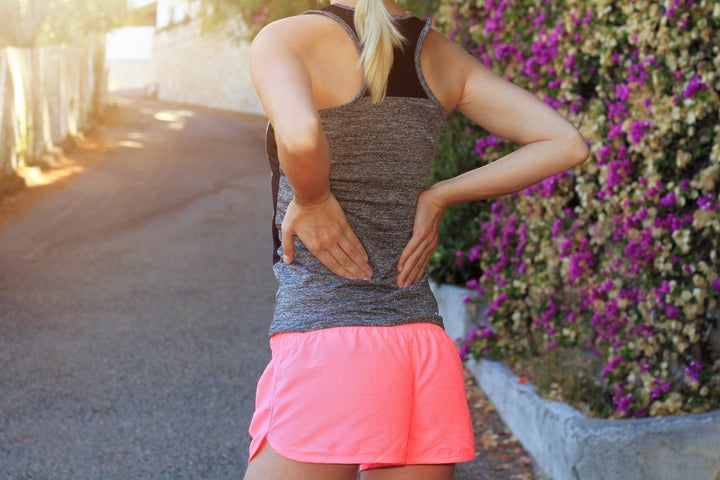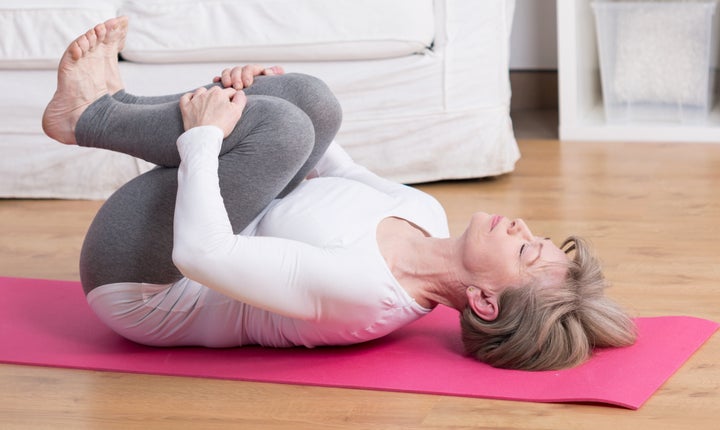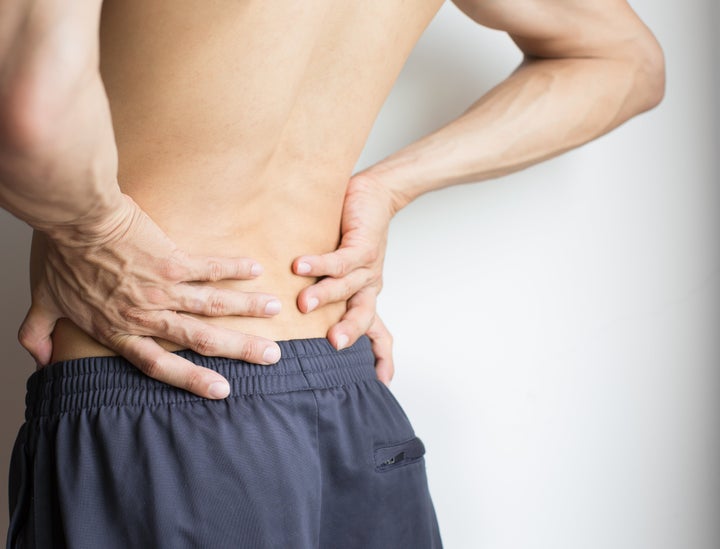
It seems like most of us have suffered from back pain at one time or another, and those that have can all agree on one thing: it’s a real pain.
When your fitness regime has started to slip, getting back into fitness can be tricky. According to a study commissioned by Voltarol and HuffPost UK, 23% of us cite fear of injury as a reason for lapsing on our workouts in the first place.
But there’s good news - working out can actually be beneficial if you’ve a tendency to suffer from back pain. A study published in February 2016 in the Journal of the American Medical Association found that exercise reduced the risk of lower back pain.
So fight the urge to avoid the gym because you’re worried about pain - getting back on track with an active lifestyle can help your pain, as well as improve your overall health and wellbeing.
First aid for back pain
If you’re unlucky enough to suffer from back pain, Voltarol Pain-eze Emulgel provides up to three times more effective muscle and back pain relief than non-medicated gel. Its triple effect helps relieve pain at source and reduce inflammation, to help speed up recovery and get you back to doing more of what you love.
For those suffering from back pain, here’s what you need to know - and the stretches that will help you to keep it in check...

What causes back pain?
“Lower back pain can be contributed to by a number of different factors; repeated, sustained or unfamiliar postures can often be associated with exacerbating lower back pain,” explains chartered physiotherapist and GSK Human Performance Lab expert panelist, Stuart Elwell.
According to Elwell, lower back pain is generally on the rise across all age groups, indicating that there may be a cultural issue with how we’re moving, resting and the activities we’re choosing to pursue.
Get moving
Contrary to what you might think, sitting on the sidelines isn’t necessarily the best medicine.
“In many presentations of lower back pain, complete rest is no longer advised.” says Elwell.
“Moving gently into directions of movement that ease pain can often be complementary and return someone back to activity.
“Simple activities, such as gentle walking, offer subtle movement to the structure of the spine, allowing reactive spasms to improve and movement to be regained. Stretches and movements to target the problem are often specific to the condition, but working with the advice of a physiotherapist, the majority of acute presentations of lower back pain are best managed with exercise at the first instance.”

“Unfortunately the majority of the population will experience lower back pain at some point in their lifetime and often presents itself with some additional muscular tone changes (commonly referred to as spasm), leading to localised stiffness and discomfort,” says Elwell.
In addition to walking, exercises like swimming, yoga and Pilates can help. In fact, a review published in the Cochrane Library in January 2017, led by University of Maryland School of Medicine researcher, Dr. Susan Wieland, examined 12 random trials of back pain sufferers and found that yoga can help cut chronic non-specific lower back pain and increase functional ability. Those who regularly practiced yoga were more likely to feel reduced back pain symptoms. Namaste.
Start the day with stretches
Stretching before you get out of bed can be another way to ease back stiffness and soreness.
“The first thing that I advise my patients to do is stretches as they get up in the morning, because most people wake up and jump out of bed,” says Sally Lansdale, osteopath and clinical director of Spinex Disc Clinic.
“They have lower back ache or sciatica, because during the night your discs swell - a natural process and the time for healing, when fluids get into the discs and bring nutrition to that area. It’s why backs are often stiffer, with more pain, in the morning.”
Lansdale recommends stretching one leg out and bending the other leg up to your chest, holding for 30 seconds, before swapping and bringing the other knee up. Hold for 30 seconds.
Then, still lying down, bring both knees up to your chest, by which time you’re a little looser, so you should be able to bring your knees even closer to your chest. Hold that position for 60 seconds.
“What that does is really stretch your lower back into flexion – one of the arcs of movement that you’re stretching,” explains Lansdale.
If you’re also looking to increase flexibility, Lansdale suggests lying on the floor (or in bed in the morning) and doing pelvic tilts upwards, which help to get the lower back and pelvis moving. Do 15 reps.

Voltarol Pain-eze Emulgel contains diclofenac diethylammonium for pain and inflammation. Always read the label.
Stuart Elwell and Sally Lansdale do not endorse any products or brands.
Voltarol is a trademark owned by or licensed to the GSK group of companies.
The GSK group of companies does not in any way sponsor nor is otherwise affiliated with any third parties mentioned in this article.
CHGBI/CHVOLT/0202/16